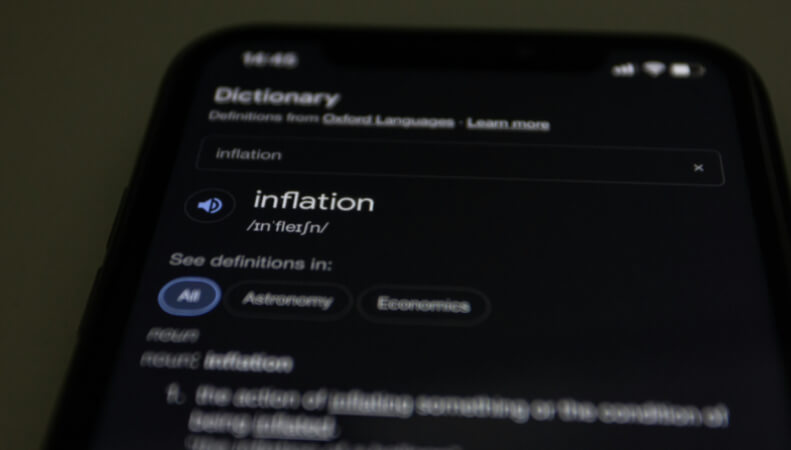By using our website, you agree to the use of cookies as described in our Cookie Policy
Blog
The Debt Ceiling
Last week the US hit the debt limit set by Congress, and the federal government began “extraordinary measures” that should buy Congress a few more months to raise the debt ceiling, should it so be inclined. Hardline Republicans are seeking spending cuts in exchange for raising the debt limit, while the White House has said it will not negotiate on this matter. Treasury Secretary Janet Yellen has warned that if the US does default on its debt, a recession is likely, and a global financial crisis would be possible as well. Debt ceiling standoffs have occurred several times in recent decades; Josh Barro reviews their history, and comments on two possible solutions—high interest bond issuance, and minting a platinum coin.
Barro notes that the accounting gimmicks that comprise the “extraordinary measures” used to keep the government afloat are now no longer that extraordinary, as they’ve been used to alleviate debt crises in 2002, 2003, 2011, 2013, 2014, 2015, 2017-18, 2019, and 2021. Given that extraordinary measures have been useful in reassuring financial markets, Barro argues that it would be worthwhile for the Treasury Department to expand its financial toolkit. Barro discusses a new bond issuance plan suggested by Matthew Yglesias and Matt Levine.
The one key trick behind such high-yield bonds is that the debt ceiling limits the principal amount of outstanding debt, but does not limit the interest amount. Barro cites an example in which the Treasury department looks to sell bonds with a face value of $100 for $200, and in theory is able to do so by offering a very high interest rate. Levine simplifies the issue further, and argues that instead of offering 2 $100 1-year bonds with a 4.5% interest rate, which gives the buyer $209 in a year’s time and would be expected to sell for about $200 today, the Treasury Department could offer 1 $100 bond with a $109% interest rate, which also gives the buyer $209 in a year’s time and would be expected to sell for about $200 today. In each case the Treasury receives $200, but in the first case it incurs a debt of $200, while in the second case it incurs a debt of only $100.
Although the math works, no one knows how markets or the public would react to such an offering (and while the 109% interest rate is a stylized example, the Treasury Department could still raise a lot of money with longer-term bonds with a 10% interest rate).
Barro isn’t arguing that premium bonds would be a substitute for legislative agreement, but that they could be an additional stopgap measure to help get the government to September, when a new spending bill needs to be negotiated. Given Republicans’ narrow majority in the House, and Speaker Kevin McCarthy’s tenuous hold on leadership, it may make sense for the Treasury Department to test-drive premium bonds rather than hope for a bipartisan agreement in the House, which could cost McCarthy his job, or an agreement between Republican hardliners and the White House.
Barro is much more skeptical about issuing a platinum coin, which in theory could be done in any denomination (e.g. a $1 trillion coin). While the Treasury could potentially mint such a coin, the Federal Reserve would need to accept it as a deposit in order for the Treasury to have the cash to spend. Given that the Fed tries to remain independent from political turmoil as it focuses on monetary policy, it is unlikely to want to become a centerpiece in a political furor. Barro comments that the mechanics of using a platinum coin to circumvent the debt ceiling means that the Fed would be selling additional bonds as a surrogate for a Treasury Department that isn’t allowed to sell such bonds at the moment. Besides complicating the Fed’s drive to quash inflation (which includes the Fed shrinking its balance sheet) Barro argues that minting the coin could also have negative repercussions on inflation expectations, as the use of the coin may be seen not as a one-time event, but, if legislators continue to fail to reach an agreement, as money-printing to pay the bills.
Politically, Barro argues, premium bonds are easier to implement. The Treasury Department could describe premium bonds as an “extraordinary measure” designed to serve as a stopgap until Congress and the White House can come to a debt and spending agreement. Hardline Republicans may get angry at anything they perceive as reducing their leverage, but it’s likely an easier sell with voters to attack a platinum coin gimmick than to explain the intricacies of bond pricing while inveighing against a new type of bond structure.
Ideally, Democrats and Republicans will reach a consensus on raising the debt limit. But given that it took 15 votes just for Republicans to elect a Speaker of the House, it may be difficult for Republicans to find a unified position on their fiscal wish list. Further financial engineering isn’t something we hope for, but if premium bonds can calm financial markets and defer the risk of default, they could be a useful tool for the Treasury Department.
###
JMS Capital Group Wealth Services LLC
417 Thorn Street, Suite 300 | Sewickley, PA | 15143 | 412‐415‐1177 | jmscapitalgroup.com
An SEC‐registered investment advisor.
This material is not intended as an offer or solicitation for the purchase or sale of any financial instrument or investment strategy. This material has been prepared for informational purposes only, and is not intended to be or interpreted as a recommendation. Any forecasts contained herein are for illustrative purposes only and are not to be relied upon as advice.
‹ Back









